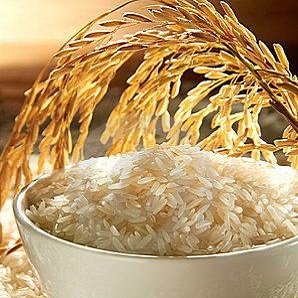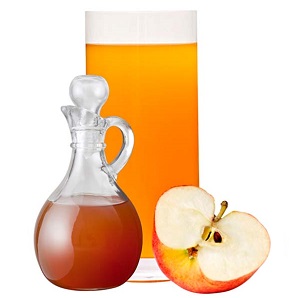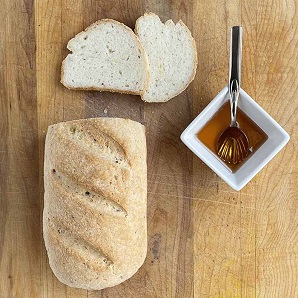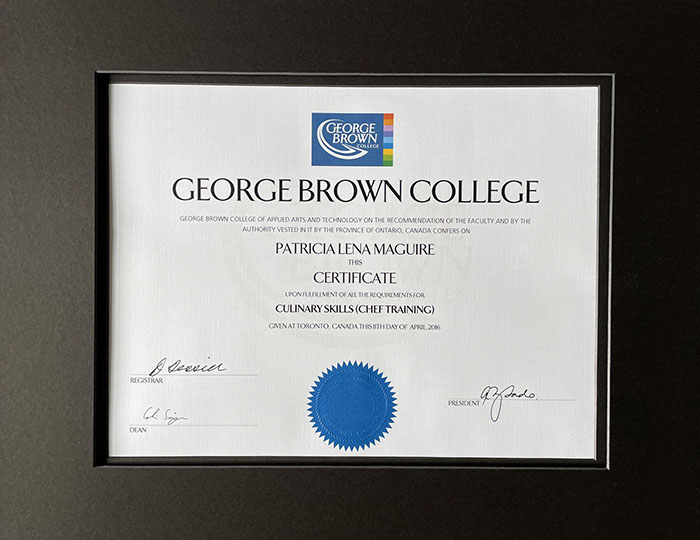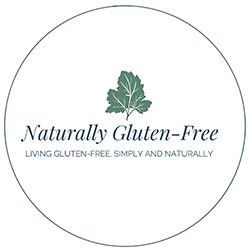- Home
- Living Gluten Free
- Myths and Facts
10 Annoying and Harmful Gluten Myths That Need to Die
Plus one surprising finding!
Do you get confused and frustrated by all the gluten myths that circulate on the internet? You’re scrolling your favorite gluten-free forum and you see something like “tea bags contain gluten”. What the actual &@#*?!?
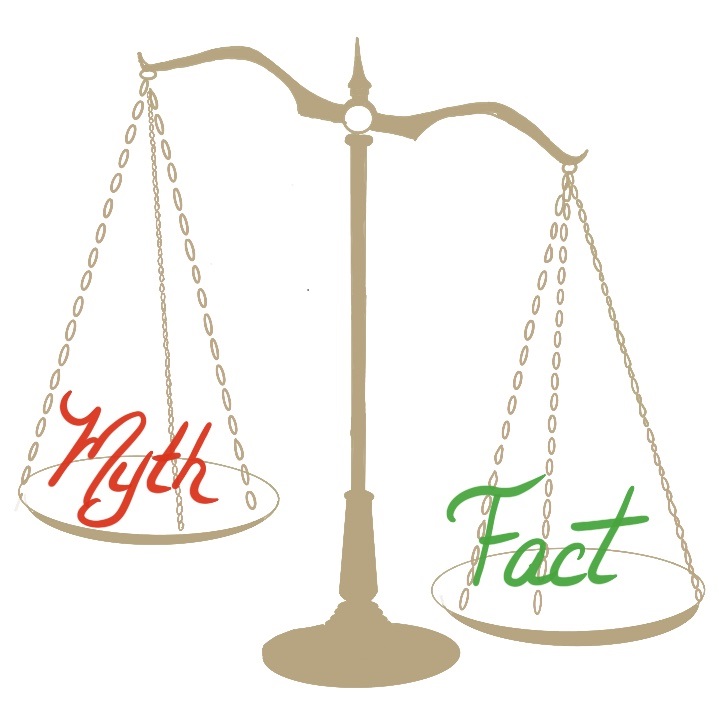
In honor of Celiac Awareness Month, I’ve gathered 10 of the most prevalent gluten myths I’ve seen and presented you with the facts. As always I provide sources so you know where my information came from and you can decide for yourself what to believe.
In some cases, things are not so cut and dry. Some gluten myths actually start with a grain of truth. We’ll explore that too.
You can skip right to the Gluten Myth that interests you most, or scroll through to see them all.
Myth # 1: Tea Bags Contain Gluten
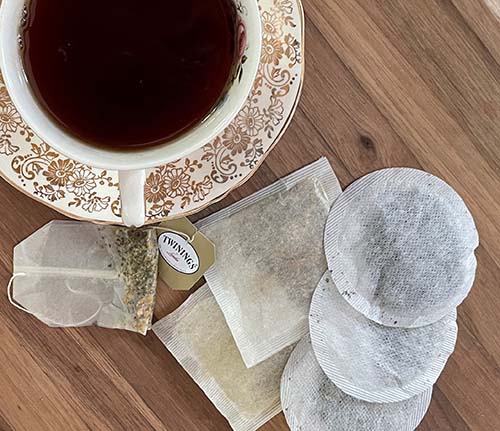
This is an internet gluten myth that just won’t die. It’s maybe not as harmful to say that something has gluten when it doesn’t as the other way around, but c’mon, this diet is hard enough without making people stress over something that just isn’t true. Stop it, please!
If you think about it, wheat paste would dissolve in hot water and would be obvious in your tea, and your tea bag would fall apart. You don't need to search for gluten-free tea bags.
Fact
Most tea bags are either folded and stapled or heat sealed. Some (PG Tips) use an adhesive made from cornstarch.
The ones that are heat sealed do contain PVC or plastic threads that melt to seal the two sides of the tea bag together.1 The manufacturers say that the plastic does not get into your tea and they pass food safety requirements2. I'm not going to tell you how to feel about the plastic thing, but you don't need to worry about gluten.
Caution: Do still check the ingredients on the tea you buy. Most will be gluten-free but some specialty tea flavors might have unexpected ingredients.
Myth # 2: Paper Straws Contain Gluten
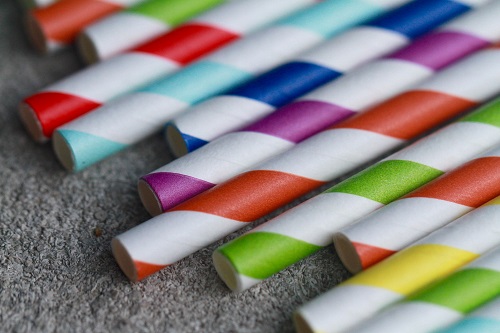 photo by Meghan Rodgers on Unsplash
photo by Meghan Rodgers on UnsplashHow do they hold those together anyway?
This gluten myth started a few years ago when restaurants and fast-food places started switching to paper straws out of a concern for the environmental impact of plastic straws.
I don't love paper straws, they feel weird in my mouth and they collapse partway through my drink, but hey, anything that keeps the earth cleaner is worth a try.
Fact
The Canadian Celiac Association actually looked into this. They contacted about 10 paper straw manufactures and several restaurant chains and got the same answer. The straws are made from tightly wound paper, there is no glue and no gluten.3
Celiac Australia made a "likely safe" statement and also looked into wheat straws and containers which they say are made from the stem of the wheat and don't contain gluten.4
Myth # 3: Envelope Glue Contains Gluten

It’s gross, but it’s not harmful.
I suggest using a cloth or a sponge to dampen the glue on your envelopes, or buy the peel and stick kind, but not because of gluten. Anyone who’s watched Seinfeld knows that you can die from licking envelopes (kidding). I wonder if that's how this gluten myth got started?
Fact
The Envelope Manufacturers Association says that envelope adhesives are derived from corn starch, there is no wheat, rye, barley or gluten in envelope glue.5
How It's Made Daily, say's that envelope adhesive is made from gum arabic which is derived from tree sap.6
There is no evidence of wheat paste in any envelope glue.
Myth # 4: Celiac is a White People Disease
 Photo by Amy Humphries on Unsplash
Photo by Amy Humphries on UnsplashIt’s not. Celiac disease is found on every continent and doesn't care about the color of your skin.
However, this is another gluten myth that has a grain of truth to get it going. Let's look into it.
Fact
Celiac disease has a genetic component and was once thought to be rare outside of Europe. We do see high incidence in northern European countries with the highest in Finland.7
However, early studies of celiac disease in Great Britain discovered a prevalence among Asian immigrants. These folks were not used to wheat in their diet. When they were exposed to it upon moving to Britain, they found out they had celiac.
This is from Dr. Peter Greene in his book Celiac Disease a Hidden Epidemic, “recent studies have found celiac disease in Eastern Europe, northern, West and East Africa, southern and central Asia and the Middle East. Celiac disease is truly and worldwide disease.”8
Myth # 5: Celiac Can be Outgrown / Cured
 Photo by Juan Encalada on Unsplash
Photo by Juan Encalada on UnsplashCan you outgrow celiac disease?
I have a friend who told me he had celiac when he was a child, but he outgrew it. Sadly, this gluten myth was a commonly held belief in the 1950’s and 60’s but it’s not true. Many folks who thought they’d outgrown celiac have started to have problems later in life and were diagnosed again.
As for a cure, this is something we see travelling around the internet, mostly by snake-oil salesmen (people wanting to sell you some kind of herbal remedy or their book, or just false hope.) This makes me especially angry.
Fact
Celiac does not go away. It’s for life. You cannot outgrow it. It can only be managed, not cured. The only treatment is a life long gluten-free diet.9
Myth # 6: A Gluten Free Diet Will Make You Lose Weight
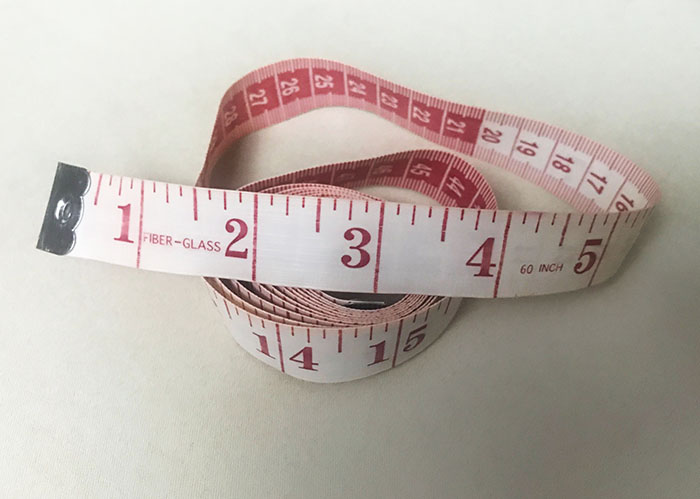
This one is complicated. You read many blogs and hear many celebrities extol the virtues of a gluten free diet for weight loss.
The gluten-free diet is not a weight loss diet! In fact, many people gain weight when they go gluten free, especially if they had untreated celiac disease and were underweight as a result. As the gut starts to heal and nutrient absorption improves, weight goes up.
Fact
Some people do lose weight when they go gluten free and that’s likely because they went from eating a diet high in processed foods and refined carbohydrates (bread, pasta, etc.) to eating more of a whole food diet. Also, some people after being diagnosed with celiac become afraid to eat anything. This of course can lead to weight loss but it’s from calorie reduction, and it’s not healthy. 10
Myth # 7: A Gluten Free Diet is Healthy

Is gluten-free healthy? If you cheated and looked ahead, you'll notice that gluten myth numbers 7 and 8 are contradictory. That's because the gluten free diet can be healthy or un-healthy depending on how you approach it.
Fact
Myth #7 is about debunking the idea that gluten is unhealthy for people who do not have celiac disease or gluten intolerance and therefore everyone should follow a gluten-free diet for better health.
There is no evidence to support this. People who have no reaction to gluten should enjoy their bread and find something else to worry about.
If you remove gluten from your diet and instead substitute a lot of packaged, processed gluten free foods you’re likely getting lots of starch and sugar. That’s not healthy.
Add to that the fact that you are removing the nutrients from your diet that you were getting from wheat, rye and barley. If you don’t replace those then you could end up with some deficiencies. 11
Myth # 8: A Gluten Free Diet is Un-Healthy
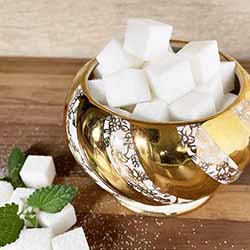
I've heard people say "a gluten-free diet is unhealthy". That is like saying "eating is unhealthy". It depends entirely on what you eat.
Some of the things they say to support their claim are:
- You're eliminating a whole food group - You're not, you're eliminating 3 things: wheat, rye and barley.
- Gluten-free foods are more processed, higher in sugar, starch etc. - Agreed, but that's true of any processed food. Just don't eat that way.
- Gluten is a necessary nutrient - It's not. You don't need gluten in your diet.
Fact
If you have a diet focused on real whole foods, such as fresh fruits and vegetables and whole fresh cuts of meat, and ensure that you get a good variety to cover all your nutritional bases, then your gluten-free diet can be very healthy. Maybe even healthier than what you were doing before going gluten-free.
Myth # 9: People with Celiac Disease Can Eat Sourdough Bread
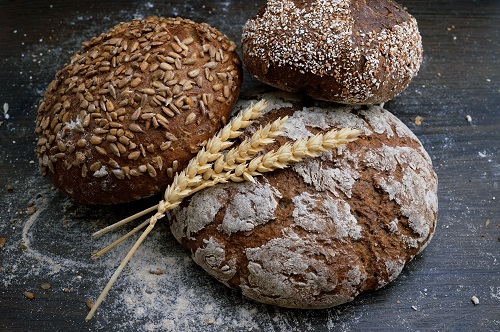
This gluten myth seems to come from a collection of anecdotes; people who say they react to gluten but can tolerate sourdough bread made from wheat.
Fact
Sourdough bread made from wheat flour contains gluten and must be avoided by anyone with celiac disease!
However, like many good myths, there may be a few teeny tiny grains of truth in this one.
The old way of making bread is to make it from a fermented sourdough culture and then in the baking process, to allow the dough to rest and ferment a little more before baking.
All this fermentation breaks down the gluten and may make it easier to digest, FOR PEOPLE WHO DON’T HAVE CELIAC.
Big American bread producers like Wonder Bread speed up this process and don’t allow for the fermentation. This may account for tummy troubles some people who do not have celiac experience when they eat these highly processed breads. 12
Dr. Peter Green in his book Celiac Disease, A Hidden Epidemic, tells us that there is research going on in Italy to test sourdough bread and see if it does in fact have less gluten and may be more digestible. 13
Myth # 10: People with Celiac Disease Can Eat European Wheat or Bread

If you do a google search on something like “does European wheat have less gluten” you’ll find lots of blogs that talk about European wheat being a softer wheat and therefore lower in gluten. You’ll also find anecdotes from American’s who’ve travelled to Europe and said they ate the bread, pizza, pasta, etc and did not have the same digestive issues they had at home. There is conjecture that it could be lower gluten content, or less pesticides, or different processing.
Fact
All wheat contains gluten and must be avoided by people with celiac disease.
None of the articles I looked at linked to any scientific studies. So there could be truth to the notion that European wheat products cause less digestive upset (in people without celiac disease) although the reason is not clear. But let me repeat, for people with celiac disease, all wheat contains gluten and must be avoided, no matter where you live or travel.
Weird, Surprising Finding
Feminine Hygiene Products (Pad, Tampons) Contain Gluten: Myth or Fact?
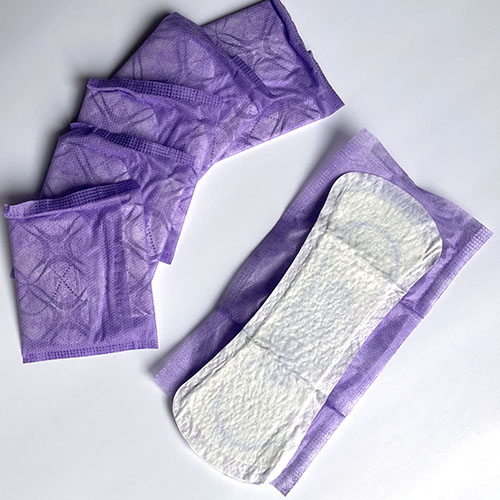
I came across this one in a celiac Facebook group and I have to admit I rolled my eyes. I know, rude, I'm sorry.
Turn out it's not as preposterous as I thought.
I'm still classifying this as "very low risk" but I felt, in the name of transparency, I had to share with you what I did find.
Facts
First of all, gluten is not absorbed through the skin. So if you have celiac then you don’t need to worry about this. 14
If you have a wheat allergy and react when wheat touches your skin you might want to know a little more. So let's look into this.
How It's Made:
My sleuthing starts with a September 2005 episode of How It's Made, a Canadian television show that's also been adapted for American TV and shown on the discovery channel. This episode shows in detail how sanitary napkins are produced. Twenty-nine seconds into the 5 minute video the narrator says that the pads are made from "super absorbent polymer powder". She then says that polymer is a super absorbent chemical made from petroleum or wheat. 15
Interesting.
A Broken Link:
Next, I found an old link in a celiac forum to a company called “Seventh Generation” that the poster said detailed how their feminine products contain an absorbent material derived from wheat. The link went to a deleted page on the company's website. They now make their feminine products from cotton. 16
A Future Product:
Being sufficiently intrigued, I kept digging and found a 2019 study looking into developing absorbent foam from wheat gluten. One of the suggested uses for this foam is sanitary napkins.
From what I can tell, this foam has not gone into production yet so would not be found in any sanitary napkins currently on the market. 17
A Fellow Blogger:
I don't usually post links or references to other bloggers. Who knows where they get their info, and it's the repetition of statements from one blog to the next that fuels a lot of the misinformation on the web. I'd rather go right to the source and protect my own reputation.
However, I like the way Celiac Diva handles this question. She states that she was unable to find any feminine hygiene product manufacturers that use gluten, so neither confirms nor denies whether it's a possibility. Then she provides a number of brands that state they are gluten-free. I think that's a reasonable approach.
Conclusion
- I too was not able to find a brand currently on the market that contains gluten.
- The references to gluten in feminine hygiene products are few and not verifiable.
- You don't eat these products, so for celiacs it's a non issue.
Considering all of the above, I could not really call this a gluten myth, but I do consider it very low risk and probably not worth worrying about.
If you do want to be extra careful then check out Celiac Diva's list of products and choose one of those.
Did You Find This Helpful?
Get in on the conversation at Naturally Gluten-Free Facebook Group
Home > Gluten-Free Lifestyle > Myths and Facts
You Might Also Like
Sources:
1. Wikimedia Foundation. (2022, April 2). Tea bag. Wikipedia. Retrieved May 5, 2022, from https://en.wikipedia.org/wiki/Tea_bag
2. Hewitt, C. (2021, May 17). What are Nerada teabags made from? Nerada Tea. Retrieved May 5, 2022, from https://neradatea.com.au/blogs/products/what-are-nerada-teabags-made-from
3. Canadian Celiac Association. Facebook. (n.d.). Retrieved May 5, 2022, from https://www.facebook.com/groups/canadianceliacassociation/about/
4. Coeliac Australia. (n.d.). Retrieved May 5, 2022, from https://www.facebook.com/CoeliacAust/photos/a.574964606027200/1505767142946937/?type=3
5. FAQ. Envelope Manufacturers Association. (n.d.). Retrieved May 5, 2022, from https://www.envelope.org/faq/
6. Team, H. I. W. (2016, October 26). What's in the glue that seals envelopes? How It Works. Retrieved May 5, 2022, from https://www.howitworksdaily.com/question-of-the-day-whats-in-the-glue-that-seals-envelopes
7. Murray, J. A. (2014). In Mayo Clinic Going Gluten Free: Essential Guide to managing celiac disease and related conditions (p. 50). essay, Oxmoor House.
8. R., G. P. H. (2020). In Celiac disease: A hidden epidemic (p. 276). essay, William Morrow, an imprint of HarperCollins Publishers.
9. R., G. P. H. (2020). In Celiac disease: A hidden epidemic (p. 4). essay, William Morrow, an imprint of HarperCollins Publishers.
10. R., G. P. H. (2020). In Celiac disease: A hidden epidemic (p. 172). essay, William Morrow, an imprint of HarperCollins Publishers.
11. https://www.health.harvard.edu/staying-healthy/ditch-the-gluten-improve-your-health
12. Pollan, M. (2013). In A natural history of transformation (p. 235). essay, Allen Lane.
13. R., G. P. H. (2020). In Celiac disease: A hidden epidemic (p. 265). essay, William Morrow, an imprint of HarperCollins Publishers.
14. Canadian Celiac Association. (2022, September 23). Gluten and lotions. Canadian Celiac Association. Retrieved October 23, 2022, from https://www.celiac.ca/living-gluten-free/gluten-and-lotions/
15. Winalitetnt. (2011, March 10). How sanitary pads are made. YouTube. Retrieved October 23, 2022, from https://www.youtube.com/watch?v=hGmA71o7p5s
16. Maxi pads - regular absorbency. Seventh Generation. (n.d.). Retrieved October 23, 2022, from https://www.seventhgeneration.com/our_products/women/maxi_pads.html (broken link)
17: Capezza, A. J., Wu, Q., Newson, W. R., Olsson, R. T., Espuche, E., Johansson, E., & Hedenqvist, M. S. (2019, October 21). Superabsorbent and fully biobased protein foams with a natural cross-linker and cellulose nanofibers. ACS omega. Retrieved October 23, 2022, from https://www.ncbi.nlm.nih.gov/pmc/articles/PMC6844118/








